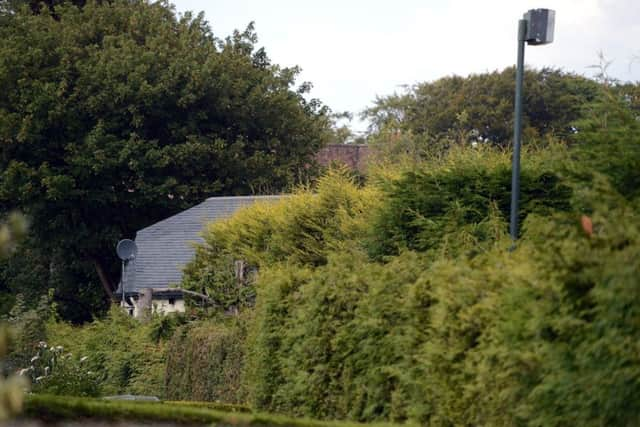Cut down your hedge, Fred Goodwin is ordered


The Scottish Government ruling, made under new legislation, stated that the giant leylandii hedge that shields the £3.5m property from other homes must be chopped down following complaints.
The home was acquired in 2010 by Goodwin and his now-estranged wife Joyce.
Advertisement
Hide AdAdvertisement
Hide AdA group of neighbours claimed the wall of vegetation blocks out the light and prevents plants from growing in their own gardens. They took legal action under the new High Hedges (Scotland) Act 2013.


It gives councils the right to force homeowners to cut hedges which are more than 6ft 6in tall if they form a barrier to light. Councils have the power to enforce cutting-back orders if owners do not have the work carried out themselves.
Edinburgh City Council issued an enforcement notice ordering hedges at the property to be trimmed, but neighbours asked the Scottish Government planning directorate to issue a ruling on exactly which ones.
In a written ruling, Scottish Government planning reporter David Liddell said hedges along the western side of the property should be reduced.
He said: “I can appreciate why the appellants consider that the western hedge is too high.
“Their rear gardens are relatively shallow, made smaller still by conservatories or more substantial extensions.
“This makes them particularly sensitive to any tall boundary fences or hedges.
“In my view the hedge, noting the narrow depths of the rear gardens, presently has a dominant and somewhat oppressive effect when experienced from these gardens.
Advertisement
Hide AdAdvertisement
Hide Ad“Overall, however, I consider that the hedge, at its current height, adversely effects the enjoyment of numbers 5-13 which the occupants of those properties could reasonably expect to have.”
The high hedge notice states that the hedge will now have to be cut back to a maximum height of 14ft.
However, Mr Liddell ruled that three other hedges at the property did not constitute high hedges and refused the neighbours’ appeal to have them reduced.
Goodwin bought the home, in the Colinton area of the city, in June 2010 after his property in The Grange was targeted by vandals.
After he split from his wife Joyce, she remained at the new address and although recent efforts have been made to reduce the size of the hedge, neighbours still believed it was unacceptably high.
In a joint statement to the Scottish Government, the neighbours said: “We would wish to stress that the appearance of this hedge is both dominant and oppressive. These two rows are not only high and block light, but their combined growth, thickness of trunks and compact branches provide a real density such that in most areas allow no light to pass through.
“The hedge spills over the five-foot-high wooden fence bordering our properties. None of the owners has ever trimmed off the overhang.
“There are real feelings of dominance and oppression which have gradually built up over the years - due to lack of proper tree management.
Advertisement
Hide AdAdvertisement
Hide Ad“The gardens may not be large but they have always been the same size, the issue is that as the trees and hedge have become enlarged they have overpowered the gardens.”
The house, which was built for football legend Graeme Souness, has large entry gates and a state-of-the-art security system, as well as tall trees which provide shade. Inside, it boasts a tennis court, Japanese garden and a circular fountain in the driveway.
Goodwin became one of Scotland’s best-known figures after his career in banking took off in 2000.
He presided over the Royal Bank of Scotland’s rapid rise to global prominence with assets of £1.9 trillion.
However, he resigned in October 2008 before the bank revealed losses of £24.1 billion - the largest annual loss in UK corporate history.
His time in charge of the Royal Bank of Scotland left the taxpayer with a multi-billion-pound bail-out bill. He was nicknamed Fred the Shred for his abrasive management style.